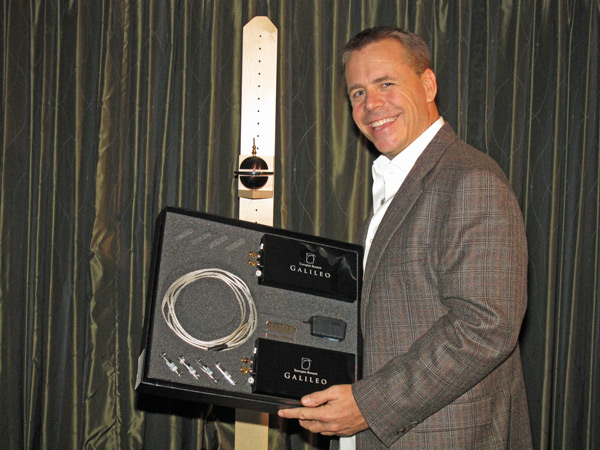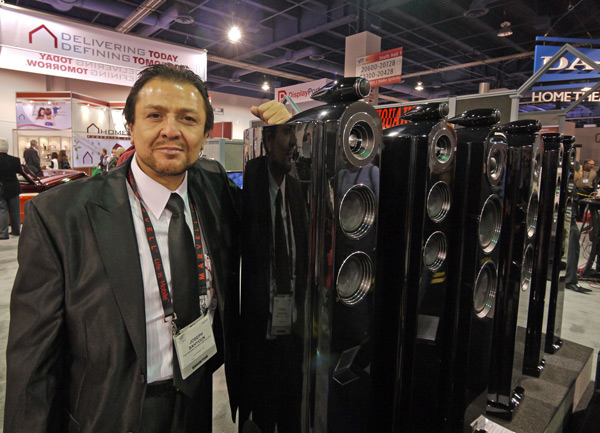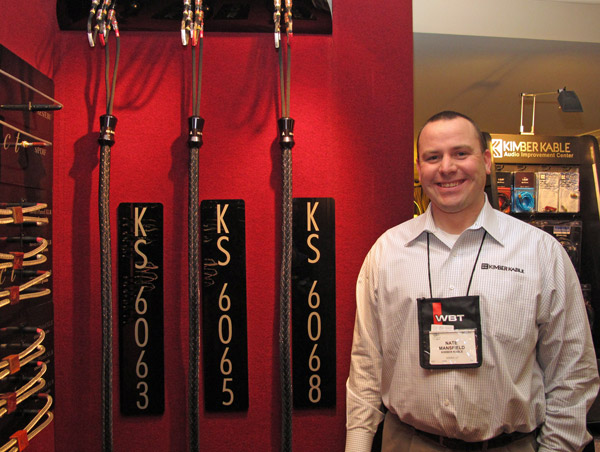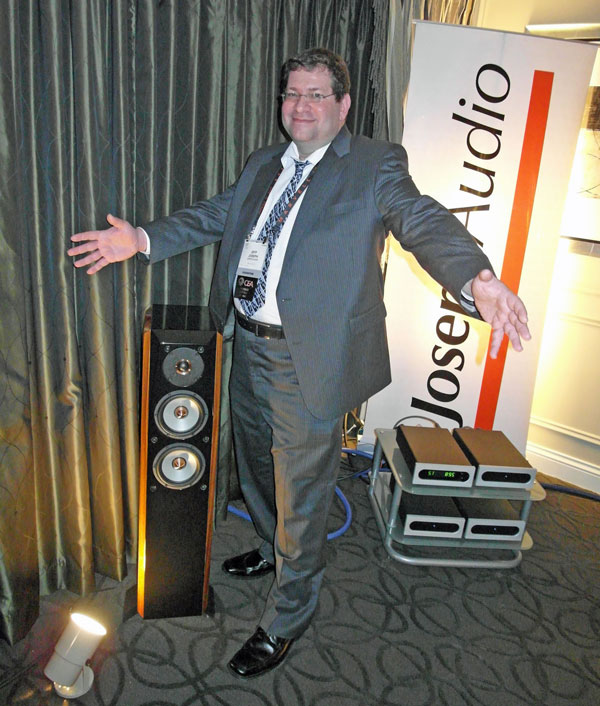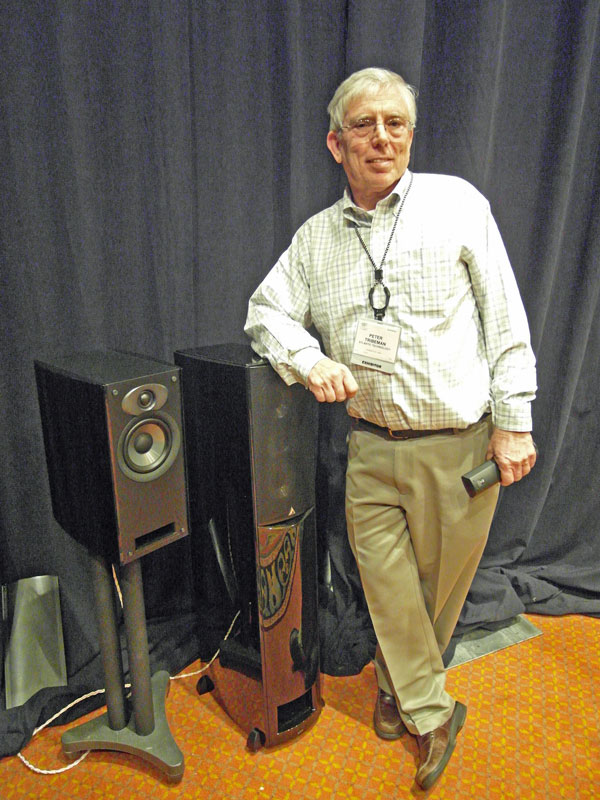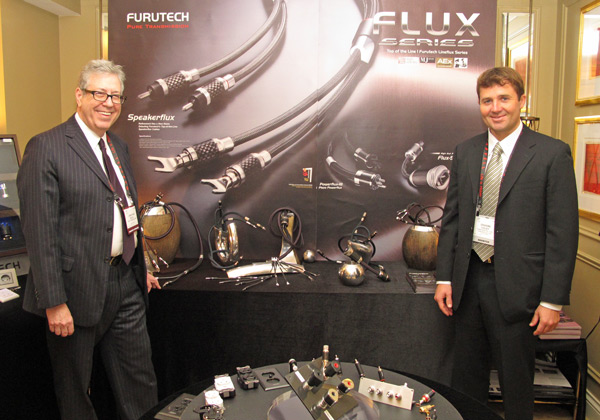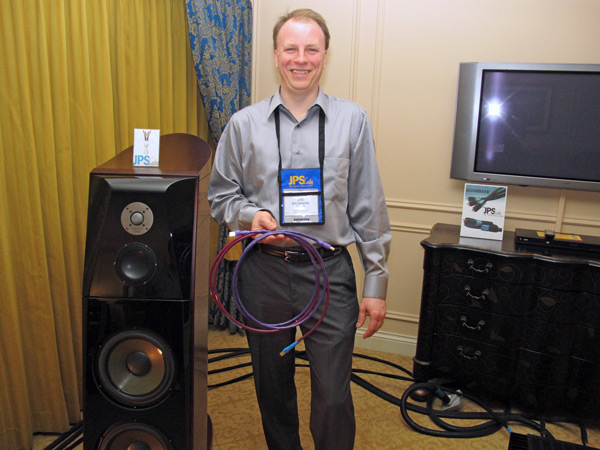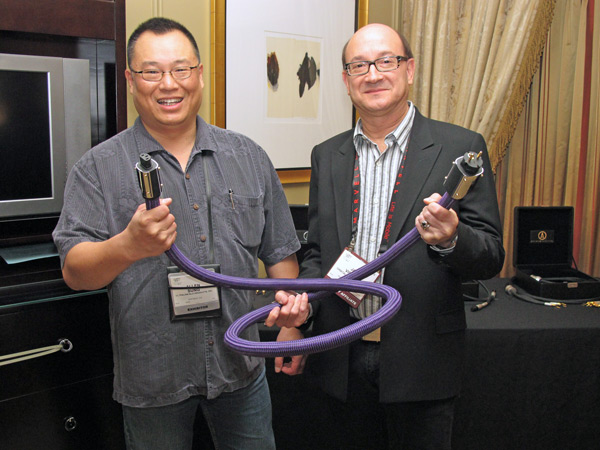LATEST ADDITIONS
Synergistic Research’s Galileo System
The Galileo System of cables includes speaker wire ($40,000/8ft pair) and interconnects ($25,000/1m pair), the PowerCell LE (limited editiononly 20 are being built for $10,000 each), and the Galileo Element series. All cables work universally, with switchable XLR and RCA terminations. If you switch gear from single-ended to balanced, you don’t have to buy an entirely new set of cables with different terminations. Very neat.
Thiel/Bryston
The Thiel/Bryston room had a system featuring the Thiel SCS4T ($3690/pair) speakers and a pair of new prototype Thiel USS subwoofers (price and delivery date TBD), partnered with Bryston electronics and digital source. The sound had that famed Thiel clarity, and an astonishing sense of depth on the well-known Misa Criolla recording. The SCS4T is the last speaker that Jim Thiel had a hand in designing: a fitting tribute to one of the greats of the world of audio.
Joseph Sahyoun’s Earthquake speakers
Case in point: the Titan Series Telesto ($7999/pair) and Tigro ($9500/pair) floor-standing loudspeakers from Earthquake, a company that until now has specialized in subwoofers. According to Earthquake President and designer of these speakers, Joseph Sahyoun, these are speakers that he actually designed several years ago, but could not build them because he was not able to get overseas the kind of molded cabinet construction that he felt was essential to get the results he wanted. The cabinets of these speakers are now made in the USA, and the drivers are also made in-house. The speakers were on passive display, so I can’t comment on the sound, but the design certainly looks like a serious effort, with a lot of attention to detail.
Kimber Select KS 6000 Series Speaker Cable
Jeff Joseph with the Perspective
H-PAS & the Atlantic Technology AT-1
Well, the patent has been granted, and the floor-standing AT-1 ($2500/pair) is the first speaker to utilize the H-PAS approach. (According to Atlantic’s Peter Tribeman, they have licenzed H-PAS to five other companieswhich he understandably declined to name.)
Having listened at CES to a pair of AT-1s, in a system that included top-of-the line Halo by Parasound electronics, I’m convinced that they’re on to something with this technology. The AT-1 is a modestly-sized floorstander, with two 5¼” woofer/midrange drivers, and yet it generated bass of such extension, power, and control that left me and others who attended the demo shaking their heads in disbelief. The sound was otherwise fine, too: tonally well-balanced (the bass was there only when it was on the recording), and a precisely-defined soundstage. Most impressive.
Furutech’s New Cable Brand
Pictured is Furutech’s Flux series of cables, which was introduced last year. The Flux power cable runs $1200/6ft, while speaker cables cost $2000/2m pair. On the left is publicist extraordinaire Jonathan Scull, standing aside Furutech’s Graeme Coley. Also present, albeit unpictured, was Furutech’s Engineer and VP, Frank Yoo.
USB from JPS Labs
Skubinski’s design goals were to transfer the digital signal as flawlessly as possible without radiating noise into adjacent cables. As I left the room, he and the folks from Usher loudspeakers were about to conduct an experiment to see if the Superconductor 3 could successfully transmit music recorded at 352.8kHz.
XLO’s Hefty Purple Rush
XLO’s designer, Jay Victor (right), explained that he wanted to design a power cable that he could use on high-current power amps in his own system. “I started dabbling in cable design when I was in charge of product development at Monster Cable with Demian Martin,” he said. “We were marveling at how much of a difference different power cables made to a system’s sound. I kept refining my ideas of power cable design, until I came up with idea of mixing different conductor shapes to best convey the whole range of bass sound.”
Victor believes that a large solid conductor is great for low bass, a flat conductor is best for mid bass, and a polymer coated Litz works best for highs and transients. He has combined all three in the Purple Rush power cord. The cord also employs an exotic field-balanced winding technique to lower the noise floor and cancel magnetic effects. All in all, five patents are associated with the Purple Rush power cord, which took eight years to develop and refine.


